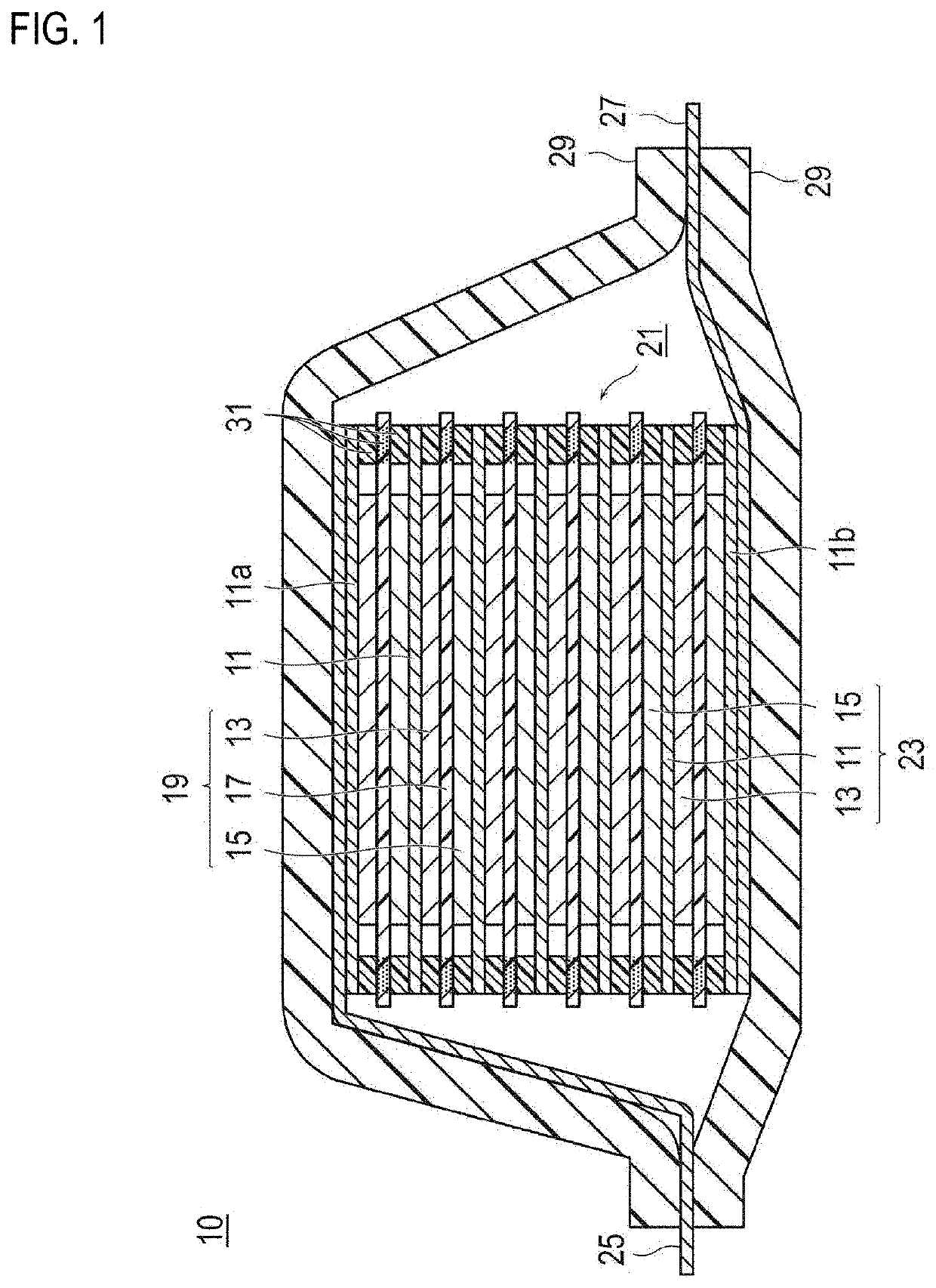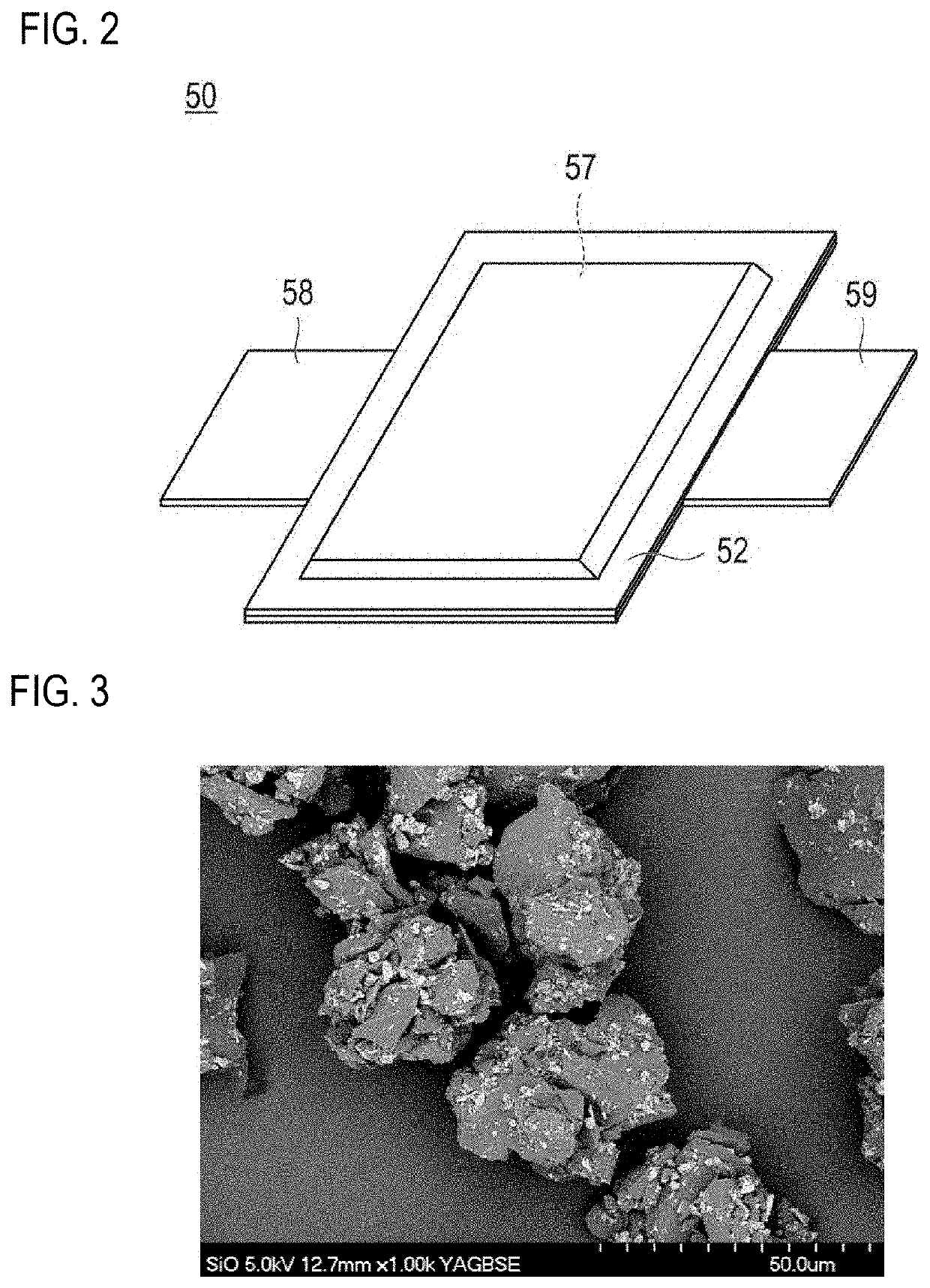Negative electrode for non-aqueous electrolyte secondary battery and non-aqueous electrolyte secondary battery using the same
a secondary battery and non-aqueous electrolyte technology, applied in the direction of active material electrodes, cell components, electrical apparatus, etc., can solve the problems of high charge and discharge capacity, sub>, difficult to obtain capacity and energy density, etc., and achieve the effect of increasing the discharge capacity and still maintaining the cycle li
- Summary
- Abstract
- Description
- Claims
- Application Information
AI Technical Summary
Benefits of technology
Problems solved by technology
Method used
Image
Examples
examples
[0167]Hereinafter, the present invention will be described in more detail by way of Examples. However, the technical scope of the present invention is not intended to be limited only to the following Examples. Meanwhile, unless particularly stated otherwise, the unit “parts” means “parts by mass”. Furthermore, the processes up to the production of a non-aqueous electrolyte secondary battery were all carried out in a dry room.
production example
Binder Production Example 1
[0168]In a personal synthesis apparatus (manufactured by EYELA Rikakikai Co., Ltd., ChemiStation) of a 100-mL test tube container equipped with a stirrer, a temperature sensor, a nitrogen line, a vacuum line, and a reflux adaptor, 1.0 g of a methacryl-modified butadiene rubber (manufactured by Kuraray Co., Ltd., L-1253, number average molecular weight 7,000 (value obtained by GPC and calculated relative to polystyrene standards), having a methacryloyl group at a single terminal), 7.0 g of acrylic acid, 14 g of toluene, and 14 g of DMF were introduced, and a monomer mixture solution was prepared. Next, while the monomer mixture solution thus prepared was stirred at a stirring speed of 400 rpm, nitrogen was blown for one minute, and then a pressure reduction operation was performed for one minute. This operation was repeated five times to accomplish nitrogen purging. Subsequently, the monomer mixture solution was heated to 65° C., and an initiator mixture so...
example 1
[0188]As a liquid electrolyte, a solution was prepared by dissolving a lithium salt (LiPF6) in a solvent (an equivolume mixture of ethylene carbonate (EC) and diethyl carbonate (DEC)) at a concentration of 1 mol / L, and further dissolving fluoroethylene carbonate (FEC) at a concentration of 5% by mass in 100% by mass of the solution.
[0189]On the other hand, 100 parts by mass of the negative electrode material (1) prepared in the Negative Electrode Material Production Example 1 described above, 1 part by mass of acetylene black as a conductive aid, and 10 parts by mass (in terms of solid content) of the binder solution (1) produced as described above were weighed and dispersed in the above-mentioned solvent, and thus, a slurry for negative electrode active material layer was prepared.
[0190]On the other hand, a copper foil (thickness: 20 μm) was prepared as a negative electrode current collector. Then, the slurry for negative electrode active material layer prepared as described above ...
PUM
 Login to View More
Login to View More Abstract
Description
Claims
Application Information
 Login to View More
Login to View More - R&D
- Intellectual Property
- Life Sciences
- Materials
- Tech Scout
- Unparalleled Data Quality
- Higher Quality Content
- 60% Fewer Hallucinations
Browse by: Latest US Patents, China's latest patents, Technical Efficacy Thesaurus, Application Domain, Technology Topic, Popular Technical Reports.
© 2025 PatSnap. All rights reserved.Legal|Privacy policy|Modern Slavery Act Transparency Statement|Sitemap|About US| Contact US: help@patsnap.com



